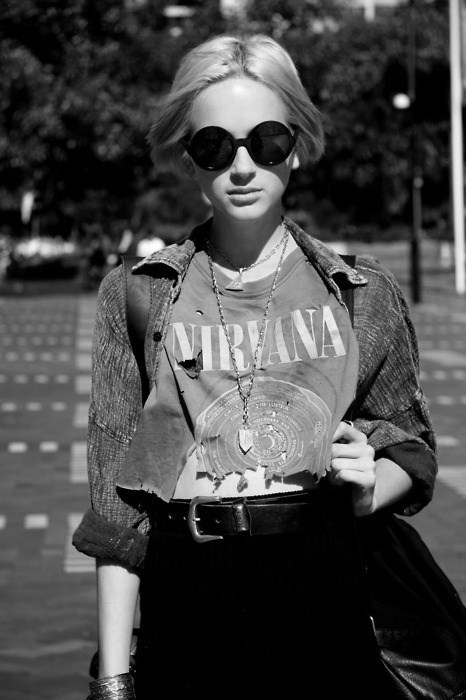Forever Young, Forever 90s
You’ve probably seen it at Forever 21--I know I have. As soon as you enter the shop, which is more like a mall, rap music fills your ears and a million articles of neon clothing bombard your vision. There’s the fancy section with dresses and blazers and button-ups, all very King’s-appropriate; then there’s the overly-pastel section, the cowgirl-meets-Indian section, the all-black section and finally, the 90s grunge section.
One look stood out to me during my most recent (and possibly final) visit to Forever 21: a sleeveless black maxi dress made from sweatshirt material, complete with a hood and a front pocket that bore the phrase “Reality Bites” in huge white caps. How many young women (college age and young professionals) are expected to know, much less associate with this movie that came out in 1994--the year after I was born?
Forever 21’s target audience ranges from teens to early 20-somethings, most of whom were growing up just as the grunge scene was beginning to take shape. Today’s vision of teen rebellion is strikingly similar to past generations. All the “new grunge” editorials splattered across magazines and blogs create this vision of lazy teenagers with cigarettes in their hands, driving into the wilderness, hanging around skate parks and laying in dusty apartments, nonchalantly posing. But instead of the effortless angst of Winona Ryder and Ethan Hawke, we now have contrived, unoriginal visions that aren’t realistic at all. The “rebellious” grunge revival is completely surface-level, imitative art that isn’t fresh, and is potentially insulting.
Another piece from Forever 21 that stood out to me was a dress: camo t-shirt on top, black tulle skirt on the bottom, featuring a large white Ramones logo. It deeply disturbed me, but it also made me wonder what kind of designer would do this. Why does Forever 21 stamp t-shirts with symbols of 90s music moguls when there are millions of contemporary artists out there with whom teens would be more likely to identify? Bands like Nirvana and Guns N Roses have been reduced to symbols of rebellion, unrecognized for their music and the cultural context in which they thrived.
I’m not saying I know all about those bands, or punk culture, but I do know that punk is dead, and it’s never coming back, no matter how many plaids we don or round glasses we gaze through. “The New Alternative” Forever 21 tries to endorse, the “modern plaid, over-sized sweaters and updated denim,” isn’t bad style at all, but it is imitative. Plaid isn’t modern; it’s become a classic. The so-called “updated” denim is all acid wash, which originated in the 60s.
As Andy Crouch says in his book Culture Making, “The only way to change culture is to create more of it.” Injecting old trends into new fashion isn’t problematic as long as there is something fresh and new being done with these trends. American culture as of late has emphasized “throwbacks,” but I would like to see some hope for new experiences and new trends.
There is, however, something about today’s grunge style that I do like: synthesis of old and new--an appreciative nod to fashion’s past mixed with the innovations of fashion’s future. Perhaps today’s alternative music has a respective fashion movement of its own. But in order to uncover this, we have to swap the “rewind” button for “fashion-forward.”


